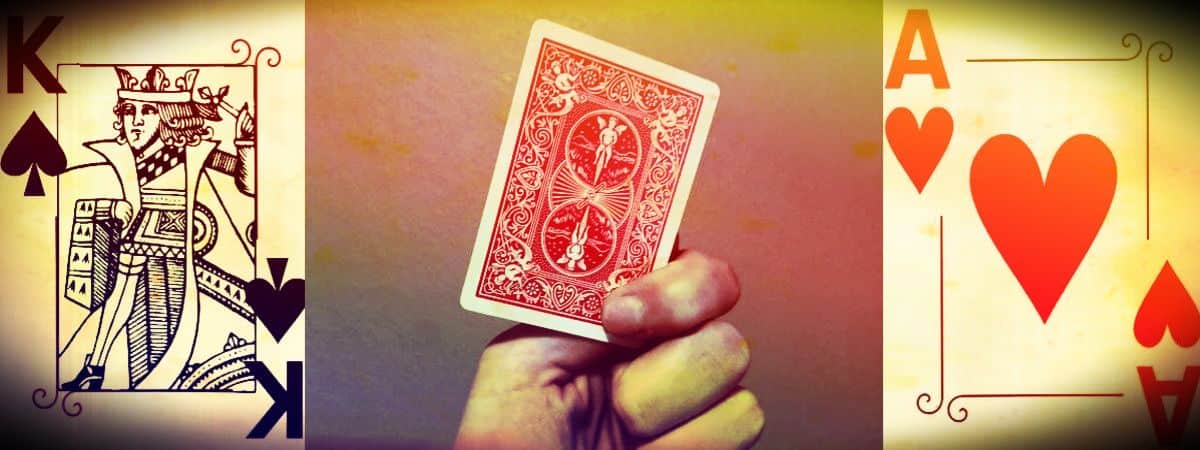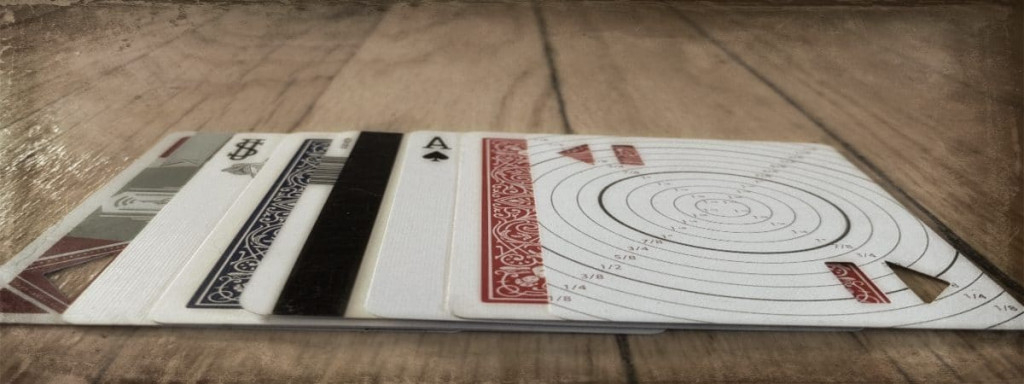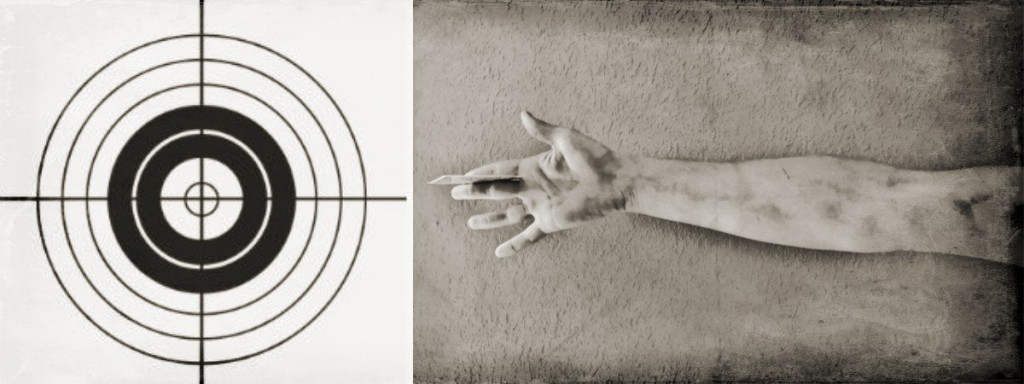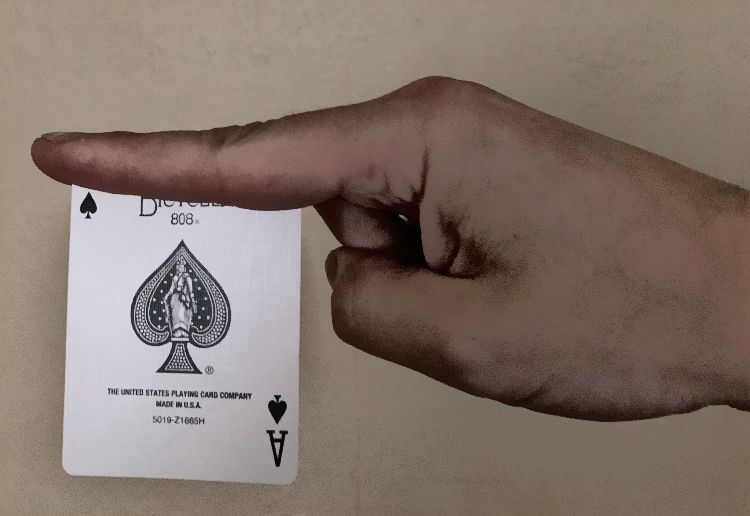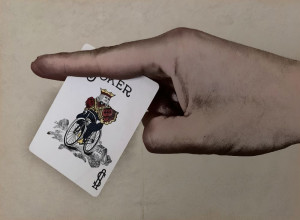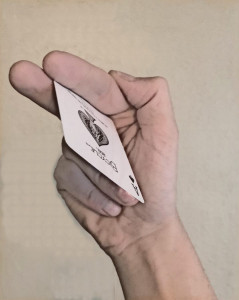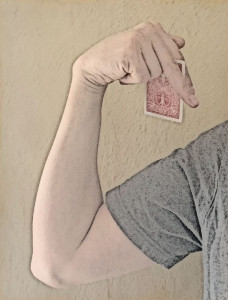Card throwing is the art of throwing cards with a high level of force and accuracy.
Learning how to throw cards is not just a fun skill to learn, it is really an art form.
It is easy to start learning, you just need some cards and some kind of card throwing target to begin.
But why would someone choose to learn to throw cards?
Some of the reasons to learn the skill of card throwing are:
- It is a very accessible hobby you can do at home, and great for nearly all ages
- It is a low-cost hobby, as most people already have cards lying around, and new packs of cards are only a few dollars
- You can get significantly better in a short time period
- It is a fun skill that you can share with your friends and family
Quick Navigation
Main Goals of Card Throwing
Some of the main goals people have when throwing cards are to:
- Throw Cards Fast and Hard: This is typically the main goal for most who take up card throwing. There is something exhilarating about taking a peaceful and passive object and turning it into a projectile. When you learn to throw cards fast and hard you can start sticking cards into targets and intimidating others with your newfound power.
- Throw Cards For Distance: There is just something about being able to take a thin playing card, and being able to send it smoothly cruising away. The hard thing about distance throwing cards is that the wind has a lot of effect on the card. It is very hard to throw outside if there is any kind of breeze. That is what makes this a little bit harder of an area of focus because cards are usually thrown indoors. That being said, working on your distance when card throwing can be extremely fun.
- Throw Cards Accurately: Some people just want to be able to throw cards with supreme accuracy. After you feel the sweet satisfaction of slinging a playing card into the center of a bullseye, you will be hooked. Not to mention being able to release the need to slice and dice fruit with cards like your a chef. What? You haven’t made a fruit salad using only cards. Well, you’re in the right place to learn.
Types of Cards
While it is cool to learn how to throw regular cards, you should be aware that normal playing cards are not the best throwing cards. There are several brands that can vary in the aerodynamic design, material, and thickness.
Some of these actual throwing cards will fly smoother and last longer than most regular playing cards. Additional features on some brands include measurement marks to help you know how far the card is piercing a target.
You can learn to throw cards just fine with normal cards, but know there are thicker and more durable options out there. You can even throw ID cards, credit cards you get in the mail, or metal throwing cards off Amazon (yes, they are sharp).
When you wear out your regular deck of cards and want to try something new check out our recommended brand of throwing cards.
– Banshee Throwing Cards: Review & Guide –
Card Throwing Targets
Before you really start learning how to throw, you should think about where you are going to throw and what you are going to throw at. Even while learning as a beginner you may have the ability to turn playing cards into a weapon.
You may surprise yourself as cards when thrown can easily nick walls and even chip the paint. It is important to pay attention to where you are throwing because learning throwing accuracy is the hardest part of the process.
As a beginner try something simple like throwing at a hung bed sheet, or large piece of cardboard to protect your walls. If you have great weather with no wind you could practice throwing outside. Making and throwing at awesome targets can be one of the most enjoyable aspects of card throwing. For more great ideas when you are ready to build a real target check out our guide.
– Card Throwing Targets: 6 Awesome DIY Ideas –
Throwing Technique
When a person first attempts to throw a card it is like watching a cat claw a string that is always just out of reach. Don’t get discouraged when you first start throwing because the skill will come faster than you think. Most people on their first try can send a card a few feet at most. However, after only a few failures and adjustments, one may be able to send a card part of the way across a room.
Now, think about this for a second. Rick Smith Jr. holds the card throwing world record for the fastest throw clocking in at over 91 MPH. He also set the card throwing world record for the farthest throw at over 216 feet with that same throw. Talk about a literal card throwing machine. Crazy huh?
While you think you may never break a world record, who’s to say you won’t. There is more power in your hands than you think and with a little guidance, you’ll find your card throwing abilities increase drastically in a short period of time. With more practice, you will be able to throw harder, farther, and with more accuracy.
With that being said, let’s dive into one of the most common card throwing techniques!
How to Throw a Card
Gripping the Card
First of all, there is no one exact way to throw a card, as there are many different ways that will work. We will cover a few of the best-proven and best beginner card throwing techniques.
Here are two examples of how you can grip a card before preparing to throw it.
The Straight Cut
Start by imagining your fingers are a pair of scissors. You want to start by pretending you’re cutting the card on the very end. This first grip is what we call the straight cut. You simply put the edge of the shorter end of the card between your index and middle finger.
The Corner Cut
The second option for a card grip is just a slight alteration from the straight cut. You want to pretend like you are going to cut the corner of the card off with those pretend finger scissors.
It doesn’t need to be a perfectly straight corner cut. The main thing to focus on is that there’s a slight space between the inside corner of the card and the base of your fingers.
For both of these, you don’t want to be squeezing the card super hard. You just want enough grip between the two fingers that you can’t easily pull the card out with the other hand.
If that is confusing to understand, just pick up a card like your playing any regular card game. Unless you are in a heated game of rummy at a retirement home, you won’t be gripping the card with a sweaty passion.
You usually grip it just hard enough to keep it level and out of the sight of others’ prying eyes. Gripping the card level will help you have a better chance of it staying level when you release it during the throw. The more level you release it, the better your card throwing results will be.
The Finger Placement and Curl
Now that you know some methods of gripping the cards, we will now look at what to do with your other fingers. You simply want to put your thumb on top of your index finger and have your ring and pinky fingers tucked in and out of the way.
Grip Recap:
1. Place card between pointer and middle finger
2. Thumb on top of the index finger
3. Ring and pinky finger pressed lightly against palm and out of the way of the card
The easiest way to figure out the throwing part for this throwing technique is by now pretending your hand and fingers are a gun.
You want to curl your wrist and try to aim at your pretend gun at your own bicep.
The reality is that you will probably just be able to point at your shoulder, but trying to point at your bicep will help ensure you tuck your wrist and arm properly. You are basically in a bicep flexing position with a finger gun in your hand.
However, your ammunition is deadly, deadly cardstock.
Arm Movement
The arm movement goes from basically touching your shoulder to firing your gun at the target.
Act as if you are in a wild west shootout and go from flexing with a gun in hand to one deadly shot.
Instead of the gun actually firing the bullet for you, you should act like your flicking a bullet out of the barrel at your target. For this to make more sense, try practicing a few throws and coming back to this.
The main area of focus with the arm movement is that you wait to turn the wrist fully until the last second.
Also, remember to release the card as flat as possible.
Perfecting The Flick
This is how you learn to throw a card fast, far, and accurately!
Once you get an idea of how your arm movement is going to work, you can start to focus on flicking your wrist.
Have you ever rolled up a towel and whipped somebody or something with it before? If you said no, your a liar, or maybe you were sadly just on the receiving end. If you said yes, harness your inner immaturity once more and imagine with me for a second.
Envision that card is a wet rolled-up towel and your target is the innocent unsuspecting victim who is just minding their own business. You really want to make this victim pay, and you want to get the best whip for the maximum sting.
You keep your card gripped, but your hand and wrist are relaxed. The only difference is that you are kind of letting go of the towel at the end of the whip. That whip and flick of the wrist are what produces the power behind a good card throw.
If you are still having trouble throwing a card remember these card throwing tips:
- First, try slow flicking by just flicking the wrist, then try to pick up the speed later with more full arm movement
- Think about your grip, and how hard you are pinching the card between your fingers
- Keep experimenting and throwing, things will start to make more sense with practice
- Try different types of throwing cards! New cards work better as used cards get bent and become less aerodynamic.
- Build strength in your hands and wrists. The technique should be your number one focus, but increasing strength will definitely make a difference.
Happy Throwing!

